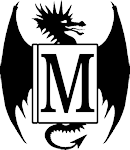Description
Long ago, interstellar human colonists settled on the distant planet Pern, hoping to create a better world. Though it looked like a paradise,
Pern had a dark danger: every 200 years, a rogue planet in the system comes close enough to spread a deadly, devouring lifeform known as Thread,
falling from the skies like a silver rain of death to destroy any living thing it touches. Using native Pernese creatures, humans managed to
genetically engineer great dragons who telepathically bond to a human rider at hatching. Combining the dragon's wings and fire and the human's
combat strategy, they battle Threadfall and allow life to flourish on the world below.
Over the centuries, the people lost all memory of their origins, reverting to an agricultural, feudal-style society, where harpers sing the history
of the land, lord-holders watch over their subjects, and tithes are paid to the dragon weyrs which protect all of Pern... but, if history has taught
nothing else, it's that humans are a short-sighted species, and when the threat of Threadfall fades into memory during a long "Pass," caused by the
Red Star's irregular orbit, will the people be prepared for its return?
This book was originally published as three volumes:
Dragonflight - It has been four centuries since Threadfall was last sighted, and people are forgetting the need for dragons and
resource-hungry dragon weyrs. Only one still remains, steadfast Benden Weyr, and their old dragon queen and human Weyrwoman have died. She left a
golden egg behind, which will hatch a new queen... but first the dragonriders must find a suitable candidate for Weyrwoman, someone strong enough to
bond with and guide the golden queen. Their search is complicated by resistance from skeptical lords, convinced that Threadfall is a thing of the
past and not, as the dragonriders fear, an imminent threat about to return to a woefully unprepared Pern.
Dragonquest - Thread has returned, and while the new Weyrwoman has brought prestige and strength to Benden Weyr and the dragons,
danger still lurks. Their unexpected allies are relics of another time and seem reluctant to adapt to today's Pern, while continued distrust and
dissent breed among lord-holders who resent the weyr tithes.
The White Dragon - Jaxom became a lord-holder long before he became a man, an heir to the position by blood. When witnessing a dragon
hatching, he inadvertently bonds with a runt dragon named Ruth. Like most boys on Pern, Jaxom has always dreamed of riding a dragon, but a lord cannot
be a dragonrider, nor a dragonrider a lord. Once a dragon bonds, however, there is nothing to be done about it. Besides, Ruth is a white dragon.
Undersized and underdeveloped, he may not even be able to carry a man's weight, let alone produce Thread-burning flames. Jaxom and Ruth may be shunned
by other riders, and Jaxom may be bound to a landlocked life as a lord, but neither he nor Ruth are going
to sacrifice their dreams, or each other.
Review
Pern, one of the classic sci-fi worlds, is well worth visiting if you haven't experienced it before, and this three-in-one volume is probably the most
economical and convenient way to do it. These, the first trilogy in the still-ongoing series (now written by Anne's son), are the best. McCaffrey considers
her dragons strictly sci-fi, but the story is more likely to appeal to fantasy lovers. She creates a rich, detailed world full of memorable characters. I
sometimes see these books published as Young Adult titles, but as a warning there is a fair amount of violence and sex... not to mention some subtext that
reads a bit squirmworthy today.
